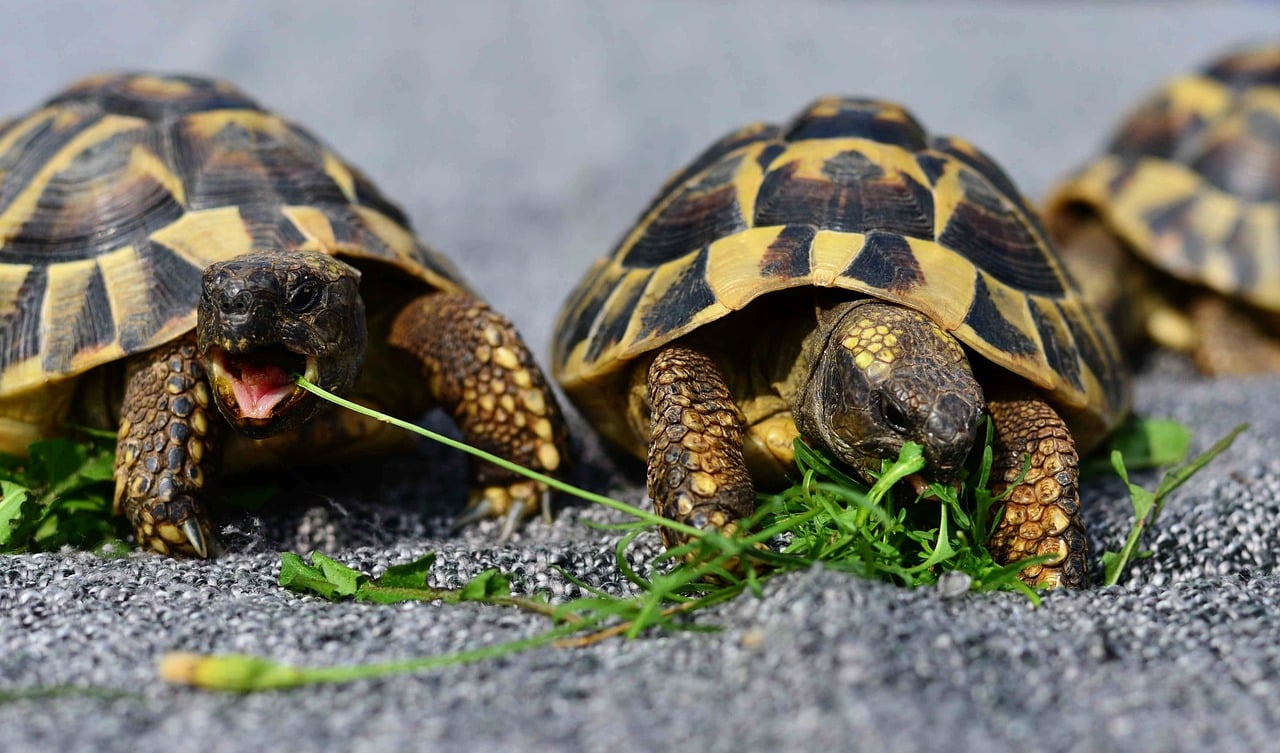What Are the Best Nutritional Strategies for Overweight Turtles?

Greetings, turtle enthusiasts! Does your pet turtle look a little more rounded than natural? Have you noticed a significant increase in its weight? Well, it’s time to take a closer look at their dietary needs. Overweight turtles can face numerous health issues, just like any other pets or even us humans. Therefore, it’s important to understand the best nutritional strategies for overweight turtles and how you can ensure your shelled companion leads a healthy and happy life.
As responsible turtle owners, you need to ensure they get the right balance of foods, keeping an eye on their intake of proteins, calcium, vitamins, and greens. With that in mind, let’s dive into the wonderful world of turtle nutrition!
A lire également : Tips for grooming small animals
Understanding Your Turtle’s Dietary Needs
Every turtle species has its unique dietary needs. Most turtles are omnivores, consuming both meat and greens. Some, however, lean more towards a herbivorous diet while others prefer more protein-rich foods. Therefore, it’s crucial to comprehend the dietary requirements of your pet’s specific species.
A typical turtle diet includes everything from vegetables and leafy greens to small fish and insects. But the key is balance. Too much of anything can lead to obesity and related health concerns. For instance, a high-protein diet can lead to rapid growth and weight gain, while too many greens without sufficient protein can lead to malnutrition.
A lire en complément : Understanding bird behavior
Remember, the ultimate goal is to provide a diverse and balanced diet that closely resembles what they would eat in their natural habitat.
High Calcium and Vitamin Foods for Turtles
One of the major highlights of a turtle’s diet is calcium. It plays a crucial role in maintaining a healthy shell and skeletal system. Natural sources of calcium for turtles include cuttlebone, calcium powder, and certain types of vegetables like kale and spinach.
Another crucial element in a turtle’s diet is vitamin D. This vitamin helps the turtle to absorb and utilize the calcium ingested. Sunlight is the optimal source of vitamin D for turtles. However, for indoor turtles, UVB lighting can be used to replicate the effects of natural sunlight.
Protein: A Critical But Tricky Part of a Turtle’s Diet
While protein is a crucial part of a turtle’s diet, it’s also where things get tricky. Overfeeding protein to your pet turtle can lead to weight gain and other health issues. Fish, mealworms, and other insects are common sources of protein.
However, moderation is vital. A good rule of thumb is to limit protein to about 20% of your turtle’s diet. The remaining 80% should comprise fresh greens and vegetables.
Greens and Vegetables: The Majority of Your Turtle’s Diet
The bulk of your turtle’s diet should consist of fresh greens and vegetables. This includes foods like kale, spinach, broccoli, bell peppers, and cucumbers. These provide essential nutrients and are a low-calorie option, ideal for keeping your pet’s weight in check.
Keep the diet diverse to ensure your turtle gets a range of nutrients. However, avoid feeding them iceberg lettuce, as it has little to no nutritional value.
The Influence of Water on a Turtle’s Diet
Lastly, let’s talk about water. Water plays an interesting role in a turtle’s diet, especially for semi-aquatic species. These turtles often prefer to eat their food while submerged in water. Besides, the water environment also affects their feeding behavior.
Keep your turtle’s water clean and fresh at all times. It’s not only crucial for their hydration but also for their general health, including digestion. Remember, clean water is just as important as a balanced diet for the health of your turtle.
Implementing these strategies can help your turtle shed those extra ounces and regain a healthy weight. However, keep in mind that all turtles are different, and what works for one might not work for another. Therefore, always consult with a vet or a turtle expert when making significant changes to your pet’s diet.
The Importance of Diversity and Moderation in a Turtle’s Diet
The concept of diversity and moderation is key when it comes to turtle nutrition. Just like in our diet, variety ensures a balanced mix of essential nutrients while keeping the calorie count in check. For instance, a box turtle’s diet should include a mix of meat, vegetables, and fruits, with a focus on leafy greens like collard greens.
On the other hand, painted turtles are primarily carnivorous when young, but their diet becomes more herbivorous as they mature. For these species, a suitable turtle diet would include small fish, insects, and a variety of vegetables.
Remember, even within the same food group, the types of food offered should vary. If you’re feeding your pet turtle insects, switch between mealworms, earthworms, and other small insects. If it’s vegetables, rotate between broccoli, bell peppers, cucumbers, and other nutrient-dense veggies. This not only prevents boredom but also ensures a range of nutrients.
While diverse diets are essential, so is moderation. Overfeeding can lead to obesity, even with healthy foods. Turtles are known for their slow metabolism, so food intake should be carefully monitored to avoid overeating. Keep an eye on your turtle’s weight and adjust their food intake accordingly.
The amount to feed your turtle depends on various factors like their age, size, and species. A general guideline is to provide an amount of food that’s about the size of the turtle’s head. This could be slightly more for aquatic turtles and less for terrestrial turtles like box turtles.
Addressing Calcium Phosphorus Ratio and Potential Vitamin Deficiency
The calcium phosphorus ratio is another crucial aspect of turtle nutrition. In a balanced diet, the amount of calcium should be higher than phosphorus. An imbalanced ratio with high phosphorus can interfere with calcium absorption, leading to health issues like soft shell syndrome.
Most natural foods have a favorable calcium to phosphorus ratio. However, certain foods like spinach and beet greens have high levels of oxalates, which can also hinder calcium absorption. Therefore, these should be offered sparingly.
Aquatic turtles and pet turtles that don’t get enough sunlight may suffer from vitamin D deficiency. This is because vitamin D, produced when turtles are exposed to sunlight, helps with the absorption of calcium. In such cases, these turtles may benefit from calcium supplements with added vitamin D or a UVB lamp for indoor enclosures.
Conclusion: Ensuring Your Turtle’s Health Through Diet and Care
In conclusion, maintaining your turtle’s health involves a combination of the right diet and proper care. Understanding your pet’s specific dietary needs is crucial. Whether you’re caring for a box turtle, a painted turtle, or any other species, a balanced diet with the right mix of meat, vegetables, and calcium-rich foods is essential.
Monitor your turtle’s food intake, provide fresh water, and ensure they have access to natural sunlight or a UVB lamp. Turtles are a delightful pet to have, and with the right care and nutrition, they can live a long and healthy life.
Always consult with a vet or turtle expert if you notice significant changes in your pet’s behavior or weight. Remember, a healthy turtle is not just about what turtles eat, but how much they eat, and the care they receive outside their diet. The more you learn about turtle care, the more your turtle will thrive.
